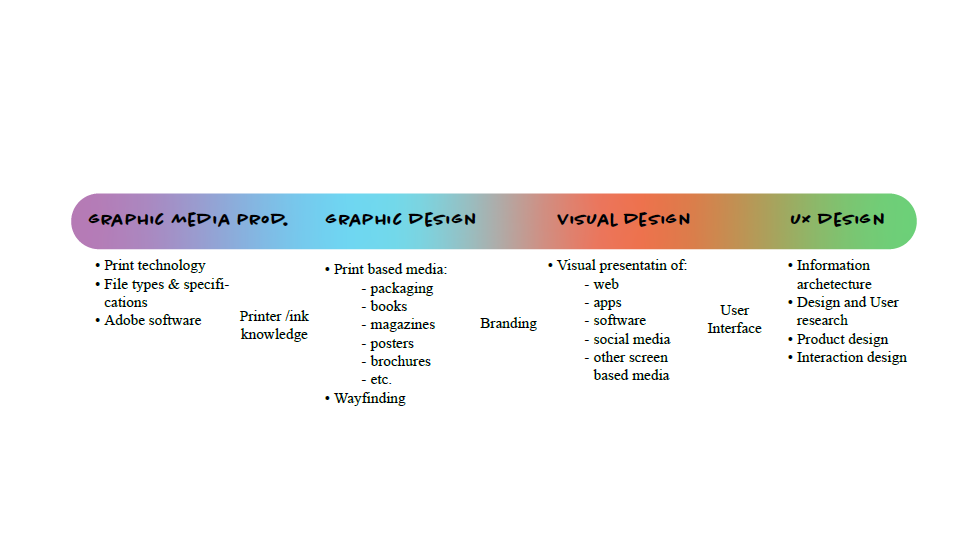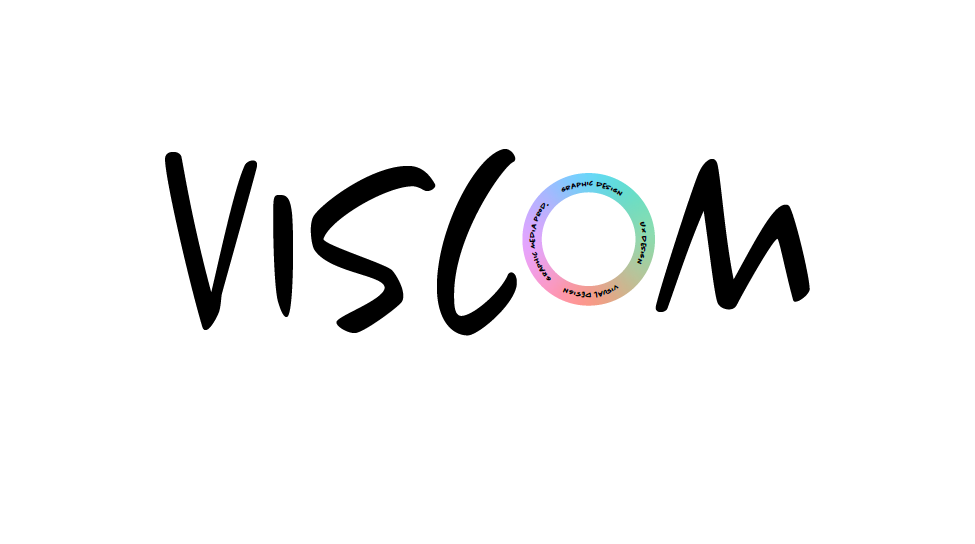by Amelie Cox
Visual Communication, also known as Viscom, is another world in and of itself. The rabbit hole of umbrella categories and sub-disciplines can be overwhelming at first glance. However, ACC’s faculty and staff have centered the department around student success.
With an emerging digital presence, specialized graphic skills are more prominent than ever. The ACC Visual Design program was introduced in the Fall semester of 2019 and was added to the 2020 catalog. With this, students gained access to four programs within the department that offer in-depth, experience based education to prepare them for the work field.
Graphic Design is at the forefront of Visual Communication as it is the most common and well known discipline; however, the umbrella of visual communication encompasses many different fields and niches that are easily unrecognizable due to the more common title. Viscom breaks down these specializations into the programs: Graphic Media Production, Graphic Design, Visual Design, and User Experience Design (UX).
These programs sit on a spectrum, with a fair amount of overlap between each discipline. “The design field isn’t as siloed as it might appear to be,” program specialist Zoe Dahmen said.

On one end of the spectrum we have Graphic Media Production, with expertise on the technical side of software and print production. Students are equipped with a deep understanding of printers, ink and how to prepare files for press, as well as similar skills on the digital end with screen-based applications. Graphic Media Production and Graphic Design go hand in hand, sharing the same foundation classes and working side by side to produce products.
With skills primarily focused on print, Graphic Design students learn to create through typography, visual language, color imagery, type, space, layout, and composition. This discipline has been around as long as the print industry has, and they are responsible for designing a range of products from books, magazines and posters to packaging and branding.
Visual Design encompasses almost everything on screen as its primary focus is on digital platforms. As a newer technological concept that split off from graphic design over the last 5-10 years, there is a specific set of skills centered around screen-based applications. Students “need to know about responsiveness, meaning how windows can be resized,” department chair and professor Joisah Spence said. “They understand user interface, how users interact with things and how to make that interaction easy.” All of these skills are still based on basic design concepts that the graphic design program teaches.
At the other end of the spectrum there is UX Design – completely focused on the digital side. “There is less of an emphasis on aesthetics,” Dahmen said. Courses focus on designing interfaces for user friendly access, across a plethora of platforms.
Ultimately UX is concerned with “what it is and how it works,” think of it as the psychology of design with a focus on how users think. Within this umbrella of user experience is information architecture, where students learn how to organize in a way that users can find what they need.
Each discipline interacts with another, with Visual Design being the overlapping point of a lot of skills. This is where some confusion arises, even within the job market – which is exactly why the Viscom team is aiming to provide more information to students upfront.
Fortunately, part of Dahmen’s job is just this. “I primarily advise students at every stage of them moving through the program,” Dahmen said. “I make sure they’re in the right program that fits their goals, what they ultimately want to do, and ensure it is in the timeline they want to achieve them on.”
Because the Visual Design program is rather new, and the term is not well known, students may enter ACC under the Graphic Design program but really have a digital focus in mind. The department seeks to make it easier for students to understand the difference between the programs and find what fits best for them.
“To make this all more complicated, a lot of hiring managers don’t use the terminology in the same way that has become industry standard,” Spence said. He further emphasizes that when looking at job postings it is important to read the descriptions – as they may list the job under one title such as UX Designer, but really mean Visual Designer, and so forth.
Another lack of clarity often falls within coding. “We teach all of our students a little bit of coding,” Spence said. “It’s just enough to understand the basics and to be able to interact with coders.” As with the other programs, there is a lot of overlap, especially with UX and visual design; however, coding is a separate discipline, and department entirely – that being Computer Information Technology.
All of this goes to show how complex the world of design is, leading individuals to wonder where they stand.
There are a variety of things to consider when deciding which department is the best fit, starting with the question, “am I more of a visual person, or conceptual person?” Furthermore, if you are a visual person, are you drawn towards aesthetics and working through how to communicate to audiences visually, or are your interests more on the technical side of software? Another key thing to consider is if you are more interested in hands-on creation or lean towards the growth industry of technical design.
It is a lot to consider, and that is exactly what advisors in the department are here to help with. Students are urged to meet with these specialists as soon as they can, and encouraged to reach out even before starting their journey at ACC. And alas, the overlap in each area allows for some wiggle room if students do decide to shift into a different program. You can schedule your advising appointment and get a more in-depth look at what each program offers on the Student Field Guide.
Viscom programs all come together as a department for the Spring semester Portfolio Show on May 11 at the new Make It Center in Building 2000 at the Highland campus. This gives students an opportunity to showcase their work, as well as give prospective students a look into what skills are developed in each program.



